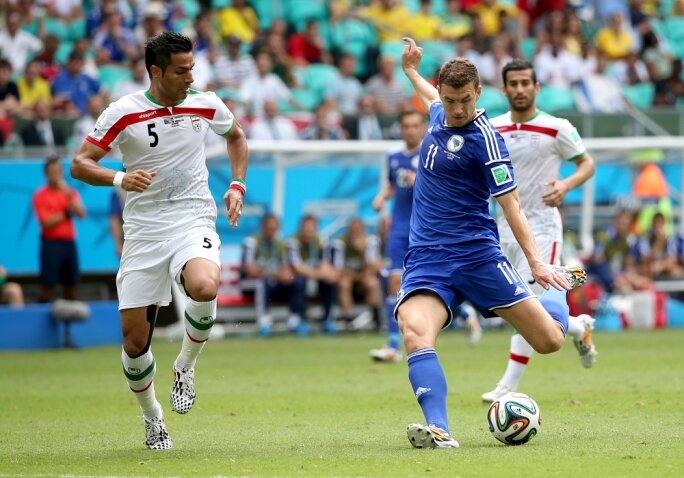The Sarajevo Derby | The Prize for a Resilient, Footballing City.
Go back in time around 25 years ago to Sarajevo, it was a war-torn city, in ruins & on its knees. The fallout from the collapse of the Socialist Federal Republic of Yugoslavia led to war in the region throughout the 1990s. Sarajevo was completely destroyed.
Fast-forward back to the present day & the city has been rebuilt & football is thriving. Sarajevo is home to the country’s two most successful teams & although they contest a very intense rivalry & derby, the bigger picture is that it is a fixture celebrated as a marker of how much the city has progressed & developed.
Before delving into anything football related in this article, a basic understanding of the conflict in Sarajevo in the 1990s is necessary. So here is a brief overview of the “Siege of Sarajevo” & the conflict in Bosnia.
War in Bosnia
Communism in Europe collapsed in 1989. Yugoslavia became unstable & war broke out in 1991, fuelled by ethnic & religious tensions. Bosnia was ethnically divided into three major groups; Bosniaks, Croats & Serbs. The Bosniak majority were in favour of Bosnia becoming an independent nation. The Bosnian-Serbs wanted to create their own autonomous region within Bosnia known as ‘Republika Srpska’. Bosnian-Serbs, with the military backing of Serbia, began claiming areas of Bosnia as part of the new Republika Srpska & after some initial successes, turned their attention to Sarajevo.
The Bosniaks weren’t about to lie-down & hand over the region’s largest city, so when the city was surrounded by Bosnian-Serb forces the Siege of Sarajevo began. The siege / battle lasted almost four years from April 1992 until February of 1996. Eventually with the backing of NATO the city held-out forcing the Bosnian-Serbs to retreat. Almost 15,000 Sarajevans were dead & the city was in ruins.
The Siege of Sarajevo completely destroyed the city | Photo Credit
Bosnia & Herzegovina was now a war-free, independent nation. The rebuilding of the city commenced & aspects of life, such as football, began to take centre stage again. Stadiums were rebuilt, squads were re-assembled & the new Bosnian government created the Bosnian Premier League in 2000. It is during this time that the re-emergence of Sarajevo’s two major teams occured; FK Sarajevo & FK Željezničar Sarajevo.
History of FK Sarajevo
FK Sarajevo were formed in 1946, following the end of World War II & at the time were seen to be the team of the middle & upper class of the city. They competed in the very competitive Yugoslavian First Division alongside sides such as Red Star Belgrade & Dinamo Zagreb & won two titles in 1967 & 1985 before the league was dissolved in 1992.
How FK Sarajevo looked in the 1980s | Photo Credit
On two occasions FK Sarajevo also reached the knock-out stages of European club competitions; reaching the last-16 of the European Cup in the 1967-1968 season & reaching the last-16 of the UEFA Cup in the 1982-1983 season. While in more recent times they have won four Bosnian Premier League titles.
History of FK Željezničar Sarajevo
Across the city, FK Željezničar Sarajevo (Željo) were formed in 1921 by workers of the local railways & so immediately struck a chord with the working class of Sarajevo. They too competed in the Yugoslavian First Division & managed to win a title in 1971. They reached the quarter-finals of the UEFA Cup in 1971-1972 & bettered that in 1984-1985 with a semi-final appearance in the same competition.
While in recent history since the introduction of the Bosnian Premier League Željo have won six titles.
As mentioned, FK Sarajevo was seen as the team of the middle & upper class & Željo that of the working class. However that is not really the case anymore. Fans of both clubs aren’t separated by social class, economic status or geography & live side-by-side throughout the city. The derby in Sarajevo is very similar to the Merseyside derby in this way.
FK Sarajevo play their home games at the Koševo City Stadium, also known as the Asim Forhatović Stadium, which they share with the Bosnia & Herzegovina national team. Željo play at the Grbavica Stadium & this ground is particularly special, even in a city where everything was touched by the war.
Grbavica was essentially on the front-line of the conflict, the playing field was turned into an active mine-field by Bosnian-Serb forces & most of the stands were reduced to rubble & burned during the war.
The Grbavica Stadium & the surrounding area following the Siege of Sarajevo | Photo Credit
The Sarajevo Derby
The first competitive derby was contested between the two in 1954 & since then they have competed at least twice a season, every season. Since the introduction of the Bosnian Premier League the games usually have league title & cup winning implications, adding a little extra spice to the fixture. It is a fiercely contested derby with all of the displays, tifos, colour, smoke, pyro, noise & passion you would expect from a capital city derby in the Balkan region of Europe.
But the key difference between the Sarajevo derby & derby day in Belgrade or a game between Dinamo Zagreb & Hajduk Split for example, is the notable absence of hooligan violence in the city between the two sets of fans on derby day or in the days building up.
Why is that?
Partly because there are countless examples across the city of best friends, siblings & neighbours supporting opposing sides. Thus dampening the appetite for blood or confrontation knowing a loved one or dear friend could be on the other end of an attack. While the other more profound reason is in truth not so long ago the entire city stood united to withstand a four year siege, fighting side-by-side. The two sets of fans don’t fully view each other as a real enemy. They are “90 minute enemies”. That is all.
There are of course examples of fan violence in Sarajevo surrounding the derby, just as there are isolated incidents in any city before, during & after any derby match. Such as during a 2014 derby where 15 fans were injured. Most of these injuries came about as a result of clashes with Police after play was halted due to the introduction of flares to the playing field by the visiting FK Sarajevo fans.
A common example of some of the pyro shows put on by fans of both sides during the Sarajevo Derby | Photo Credit
What is clear is that the violence & vicious hatred is not nearly at the level it is between Red Star & Partizan in Belgrade, as a local & relevant comparison.
Sarajevo Ultras
Yes, hooligan violence between Sarajevo & Željo fans is not all that common but that does not mean the ultra scene is non-existent in the city. Both clubs have large, colourful & loud ultras groups that are known around Bosnia & Herzegovina & beyond.
The ultras group “Horde Zla” was founded in 1987 & are the largest & most famous group of supporters of FK Sarajevo. Horde Zla roughly translates as “hordes of evil” & although violence in Sarajevo against Željo is not all that common, Horde Zla have gained a bit of a reputation across Europe for actively engaging with other hooligan groups during their European campaigns since the turn of the century.
Horde Zla have also developed a very strong fan friendship with “Ultras Dynamo” of German club Dynamo Dresden & both sets of ultras can be regularly seen attending each other’s home domestic games as well as uniting for some of FK Sarajevo’s European away games.
A Horde Zla banner clearly visible in the home end during a Dynamo Dresden game at the Rudolf Harbig Stadion | Photo Credit
While over in the blue half of Sarajevo the most famous Željo ultras group are the “Manijaci” which translates as “Maniacs”.
Like Horde Zla, the Manijaci were founded in 1987 & their group’s history will forever be closely linked with their stadium & the war. As mentioned previously the Grbavica Stadium was essentially the front line of the war & it is reported that many members of the Manijaci were active in defending the Grbavica neighbourhood against the Bosnian-Serb forces during the siege.
One such member was Dževad Begić Đilda. Begić was one of the founding members of the Manijaci & was killed in July 1992 defending the city. He is remembered & celebrated every year on the anniversary of his death by his fellow Manijaci members.
May 2nd is also a hugely important date for all Željo fans. On that date in 1996 the first game back in the Grbavica Stadium was held after the people of Sarajevo helped rebuild it following its destruction during the siege.
Manijaci putting on a show during a league game at the Grbavica Stadium | Photo Credit
Bosnian National Team
Football has been a welcome distraction from social, economic & political issues in Sarajevo & indeed all of Bosnia & Herzegovina since the end of the war. With a population of less than 4 million people & considering where the country was 25 years ago, the Bosnia & Herzegovina national team has punched well above its weight.
They qualified for their first ever World Cup in 2014 & despite not advancing out of their group, they did record their first World Cup win with a 3-1 triumph over Iran. They narrowly missed out on qualification to their first ever European Championships in 2012 & 2016, on both occasions losing out during a two-legged play-off. While the country has developed some household names in European football such as Edin Džeko, Miralem Pjanić & Asmir Begović.
Edin Džeko puts Bosnia & Herzegovina ahead versus Iran at the 2014 Word Cup | Photo Credit
Football in Bosnia & Herzegovina is most certainly on the up.
No matter what aspect of life you are talking about, when talking about Bosnia & Herzegovina, & in particular Sarajevo, it is impossible for it not to be linked back to the war somehow. Football is no exception. The Sarajevo derby is no exception. Yes bragging rights & being the number one team in the city is important for fans, but fans of FK Sarajevo & FK Željezničar Sarajevo seem to be able to see the bigger picture.
The fact they have a derby, played in their own city, played in their own national league, is the real triumph in all of this.







